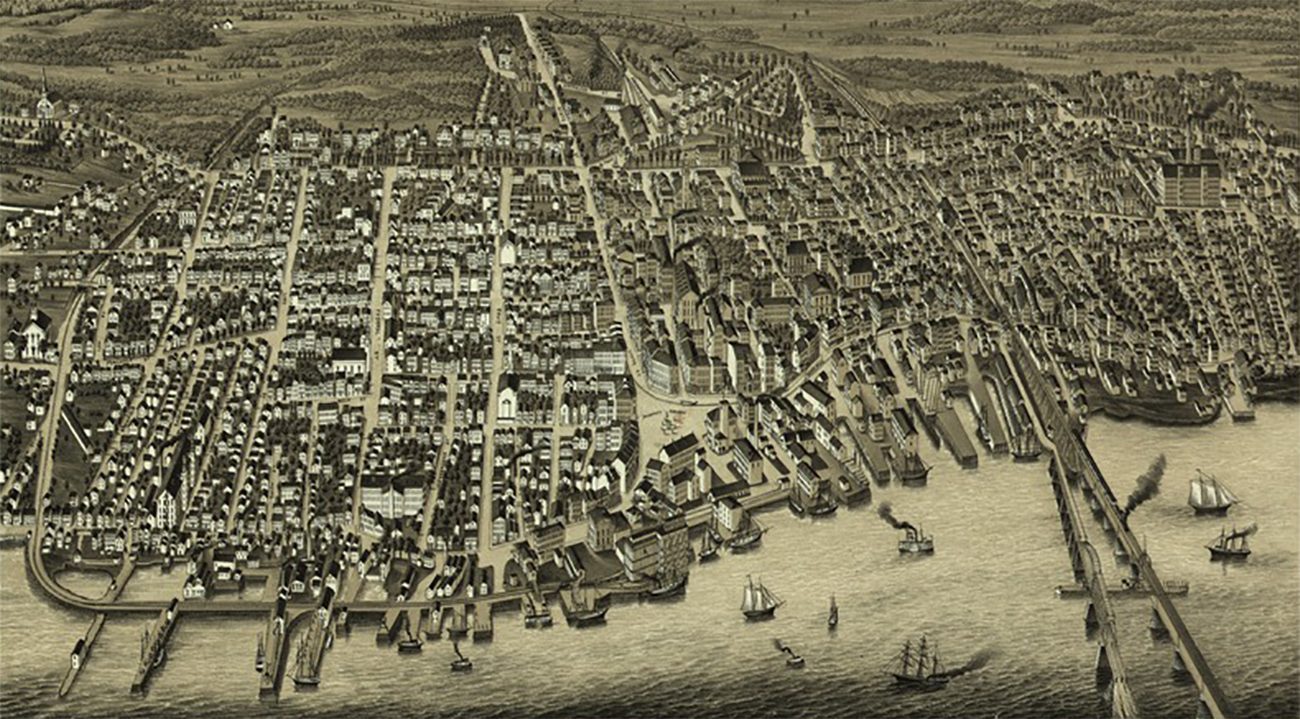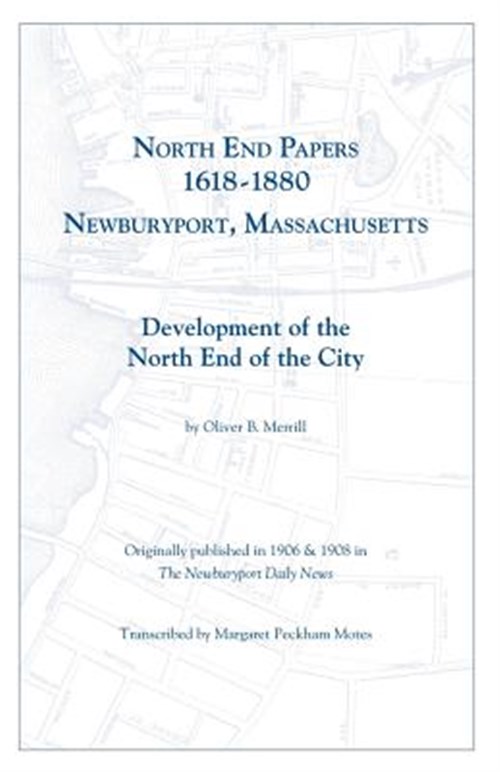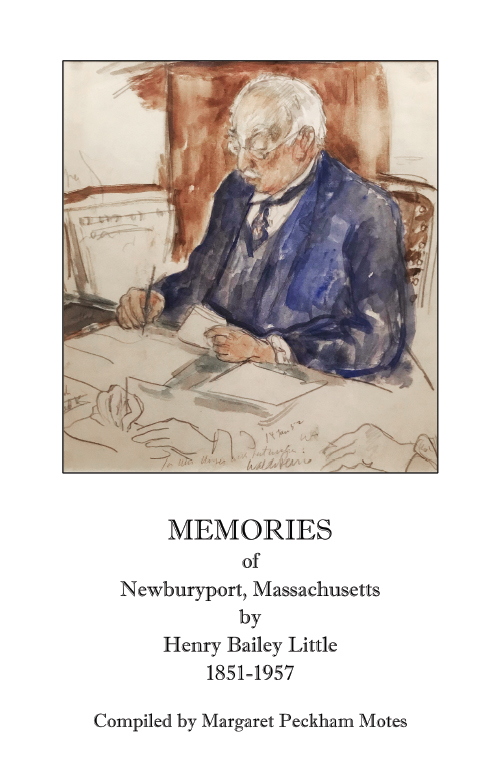
Heritage and People of Newburyport, Massachusetts Captured in Two Books
First settled in 1635, the coastal city of Newburyport, Massachusetts, is situated at the mouth of the Merrimack River, about 35 miles northeast of Boston. During the Revolutionary War privateers famously operated from Newburyport. At various times in the 19th and early 20th centuries, it boasted of a significant fishing and whaling fleet. Later, clipper ships were built there. While these industries have disappeared, Newburyport is today a popular seaside tourist attraction with a rich history.
In recent years author/editor Margaret Peckham Motes has strived to preserve Newburyport’s rich heritage. This has taken the form of two older books that Ms. Motes has transcribed, edited, and enhanced with illustrations.
The first of these efforts, The North End Papers, 1618-1880, by Oliver B. Merrill, was originally published in installments in the Newburyport [Massachusetts] Daily News in 1906 and 1908. The author, a lifelong resident of the North End of the town, had as his purpose to “trace the ownership of the land from the first owners of the sold property down to modern time [1908], and to give the history of the substantial and solidly built houses that have stood the sunshine and storms of more than a century, and are good for the use of many generations yet to come.”
The reconstituted North End Papers, 1618-1880 will appeal to genealogists and historians alike. In the first instance, Oliver Merrill drew his findings from the registry of wills and deeds at Salem; the town records of Newbury and Newburyport; files of old newspapers, back to 1792; and a variety of published sources. Since Merrill was as interested in Newburyport’s inhabitants as its structures, readers will discover an abundance of local history in his work.
Not content merely to transcribe Merrill’s original articles, Margaret Motes scoured the collections of the History Society of Old Newbury for relevant photographs of the North End, as well as shot new photographs of structures that have survived from the author’s day. Readers will find 27 such illustrations throughout her transcription, as well as a name and subject index of 3,000 entries to the contents of the volume.
Recently Ms. Motes has turned her attention to Memories of Newburyport, Massachusetts, by Henry Bailey Little (1851-1957), which originally appeared in August 1959 issues of the Newburyport Daily News. Little, a prominent banker, was also well connected to New England civic life through his offices or directorships in the American Unitarian Association, First and Ocean National Bank, and the Anna Jacques hospital. He was old enough to recall as a boy the hanging of the abolitionist John Brown and the torchlight parade that greeted President Lincoln’s election in 1860, and of course the shock of his assassination. The author also lived long enough—he was 104 at his death–to record the extraordinary changes in Newburyport’s business community, its Labrador fishing industry, transportation, styles of dress, modes of communication, and other historical institutions.
As she did for the North End Papers, 1618-1880, Ms. Motes has added a number of photographs of Mr. Little, his homes, and the changing character of city life. Anyone interested in life and times of 19th– or 20th-century Newburyport will enjoy Margaret Motes’ rendering of Henry Bailey Little’s charming collection of remembrances.





